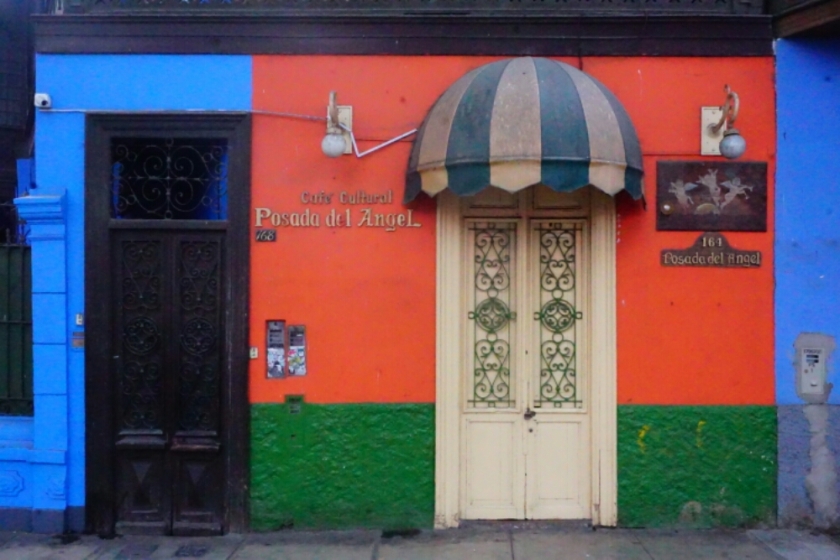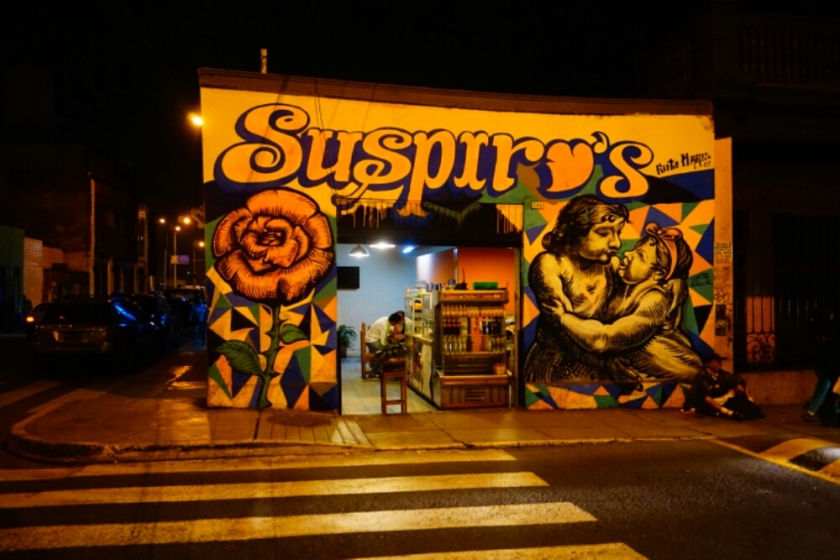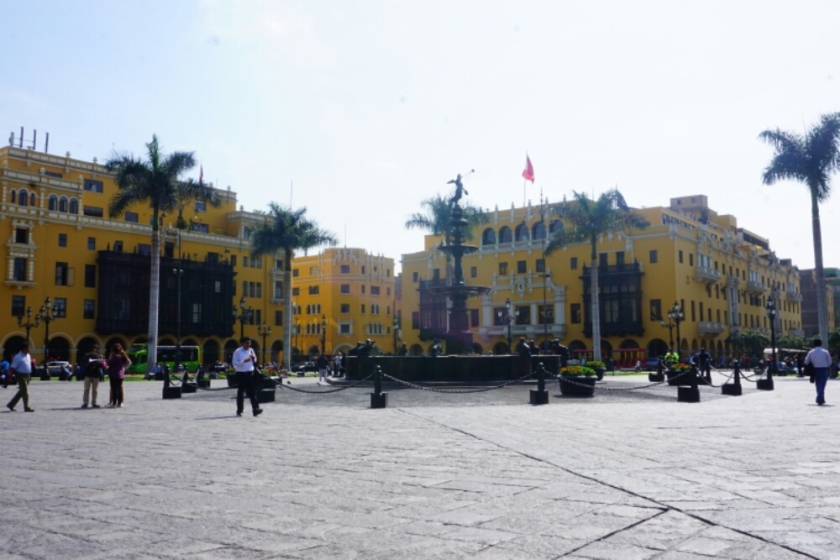Although there were a lot of intereting things in the north of Peru, I will skip to write about that part to be back in the present.
A week ago, I entered the metropolitan area of Perus capital. Already 50 kilometers before I reached my destination, the traffic got dense and the Panamericana grew from one to two and occasionally to four lines. It demanded a lot of concentration to cycle trough this traffic jungle and I especially had to watch the buses and so the so called Micros, which crossed my way all the time to let hop in and hop off the passengers. Like in most off the parts of South America there are no paths for cyclists. But at least in the towns its changing. Recently they started to build a lot of new ones in the suburb Miraflores, but seems as if the people still have to get used to it, cause cars are crossing the ciclovias without looking or pedestrians walk on them, but the first step to built up the awareness is done.
One third of Perus population live in Lima and their surroundings. It seemed to be as if I’m in another world in comparison to the rest of the country. Especially in the Center, in Miraflores, Barranco, San Isidro or Surco, the quality of close to Europe. Various bars, restaurants, shops of brands, casinos, hotels and also malls give me the feeling of being in a western city. The average of the prices are much more expensive then in the countryside and according to well-built houses, the clothes and some more expensive cars it’s obvious that the people have much more money. In contrast to the well-being of the rich suburbs there are huge favelas in the suburban areas, where people live in small houses made out of loam and corrugated sheets. This areas become bigger and bigger cause more and more people settle down uncontrolled, which is leading to bigger and bigger problems. Especially the water suply is getting critical due to the massive growth of the city in combination of the global warming. In addition the high gradient of life quality rise the potential of conflicts, but currently you don’t feel so much of it inside the good areas and I haven’t had any problem, but while passing the poorer districts I felt this rising tension.
Nevertheless I had a good time in Lima. I visited two art museums, was impressed by the colonial buildings and enjoyed the high culinary variety. Camu camu fruits from the market, picarones, empanadas, ceviche, pisco, causa rellena, tacu tacu and more typical local food show that Peru provide a lot of different tasty dishes. I took part in a birthday party and visisted some bars, where I hadn’t been for a while. The coast is full of surfers and paragliders hover through the air. They can be well observed from the cliff coast in Miraflores, where green parks give space to hang around or do some sports.
I regained the feeling of habit, driving along the same street several times, entering the elevator in the house of my friends, waking up in the same bed or meeting the same people over and over again. The totally unusual feeling of habit and other changes with come with it like getting a role in this context, showed me even more what it is to be in an always changing environment. So, do I have any daily habits during my travel? I would say barely. Maybe the construction of my tent or the packing of my bike became something like a habit or to order a vegetarian dish, but there is not much left to feel like in a daily grind. On top I got lost in time somehow and most of the time I don’t even know what day of the week it is. Eating doesn’t stick to a certain time and waking up is more related to the sun. It feels good not to have any deadlines, appointments or any points in time, where something or somebody determine my doing.
In a few minutes the journey goes on, pedaling south like most of the time. Pisco, Paracas and Ica are waiting to be explored.
Zum Inhalt springen









